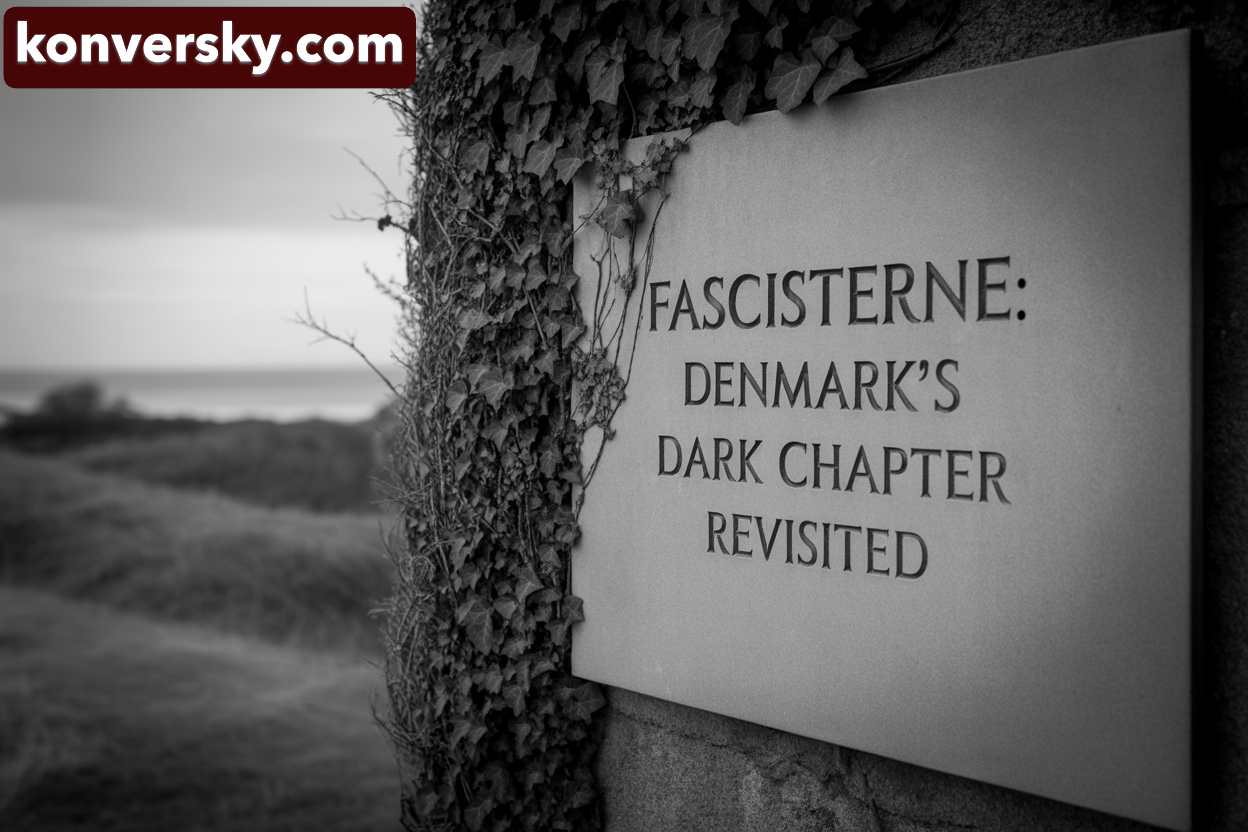Introduction
Fascisterne refers to movements in Denmark that embraced fascist-inspired ideology during the 20th century. Families, schools, workplaces, and communities all felt the strain of these ideologies, as daily life grew marked by fear, suspicion, and enforced conformity. Although smaller than the movements in Italy or Germany, they left a lasting imprint on Denmark’s political, cultural, and social landscape.
Their presence stirred deep division, sparked heated debates, and challenged democratic norms. Citizens faced difficult choices as society struggled with competing visions of authority, identity, and freedom. Families, schools, workplaces, and communities shouldered the weight of these ideologies, while fear, suspicion, and conformity quietly shaped everyday life.
Revisiting this chapter is essential today. Extremist ideologies continue to emerge worldwide, often disguised as populist movements or nationalist policies. By studying fascisterne, Denmark and other nations gain valuable insight into the mechanisms of authoritarian influence. Understanding this history strengthens democracy, fosters inclusion, and equips societies to resist intolerance, manipulation, and division. Historical lessons remain vital to maintaining stability and civic harmony in modern societies.
Origins of Fascisterne in Denmark
Mussolini’s rise in Italy and Hitler’s ascent in Germany provided examples of charismatic, centralized leadership capable of reshaping nations. Their apparent success inspired Danish groups seeking stability amid political and economic chaos.
Denmark faced social unrest, political fragmentation, and economic hardship during this period. Rising inflation, widespread unemployment, and uncertainty left many citizens frustrated with traditional parties. Political divisions weakened governance, creating anxiety about the nation’s future. Fascist ideology appeared to offer solutions: order, unity, and renewed national pride appealed to those who felt abandoned.
Several movements emerged quickly. Leaders emphasized loyalty, strict discipline, and the glorification of Denmark’s history and culture. By the 1930s, these groups organized public rallies, distributed pamphlets, and delivered speeches to spread their message. Fear and uncertainty allowed their voices to grow louder, even as significant resistance persisted among ordinary citizens, creating tension between competing visions of Denmark’s future.
These movements extended beyond political rhetoric. They infiltrated social organizations, youth groups, and cultural institutions, aiming to influence public opinion from multiple angles. The desire to control both thought and behavior demonstrated the comprehensive nature of fascisterne’s ambitions.
Core Ideology and Beliefs
Extreme nationalism formed the core of fascisterne ideology. Leaders placed the nation above individual needs and demanded absolute obedience. Authority rested in the hands of a few, leaving little space for dissent, personal freedom, or open debate
Fascisterne promoted a single, unified voice, claiming it could restore order and national pride to a fractured society.
Minorities were frequent targets of this ideology. Identity politics divided citizens into “true patriots” and “enemies of the state,” creating fear, tension, and social hierarchies. Communities became vulnerable to discrimination and conflict, while trust between neighbors often eroded under constant ideological pressure
Propaganda played a central role. This ideological conditioning extended to young people, ensuring the perpetuation of fascisterne principles over time.
Growth and Influence in Danish Society
Fascisterne expanded their influence through public rallies, printed propaganda, and carefully orchestrated speeches. Their messaging emphasized national pride, strength, and the dangers posed by outsiders. Young people were particularly attracted to the promise of purpose, belonging, and social identity within these movements.
Despite their efforts, Danish society remained divided. While some citizens admired the stability and certainty fascisterne offered, others resisted actively. Underground networks, civic organizations, and community leaders mobilized to protect democratic freedoms and human rights. Local newspapers, independent clubs, and religious organizations became centers of opposition, showing that resistance persisted even under intense ideological pressure.
International fascist networks strengthened Danish groups further. Connections with Italy, Germany, and other European movements provided strategic guidance, financial support, and legitimacy. These ties allowed fascisterne to coordinate more effectively, expand their presence, and influence political debates even amid persistent domestic opposition.
The influence of fascisterne also permeated cultural life. Newspapers, theater, and arts were leveraged to spread ideological messages. Public ceremonies, parades, and symbols reinforced loyalty to leaders and the nation, combining fear, propaganda, and social incentives to sustain support among followers. Such infiltration of cultural spheres allowed fascisterne to affect societal norms, shaping how citizens perceived loyalty, citizenship, and identity.
Impact During the 20th Century
Fascisterne left a lasting mark on Denmark’s political landscape. Some politicians yielded to authoritarian pressures, while others stood firm, heightening tensions within government and administration.Policy debates often reflected a struggle between democratic ideals and authoritarian influence.
Social life was deeply affected. Fear, self-censorship, and conformity became common, limiting cultural expression and civic engagement. Minority communities often felt unsafe, and social cohesion weakened under ideological pressures. Daily routines, workplace interactions, and local governance were subtly shaped by fascisterne’s presence, making life unpredictable for many citizens.
Connections with European fascist regimes intensified the impact. Strategies, propaganda techniques, and ideological principles borrowed from Italy and Germany gave local movements credibility and confidence. International support allowed Danish fascisterne to expand and coordinate more effectively, reinforcing the broader European context in which fascism operated.These transnational networks facilitated the sharing of literature, symbols, and strategies, enhancing the reach and sophistication of propaganda
Decline and Aftermath
After World War II, fascisterne rapidly declined. Leaders were arrested, fled, or disbanded their organizations. Organized activity largely ceased, yet memories of their influence endured in Danish society
Trials and legal accountability were central to Denmark’s postwar recovery. Leading figures faced prosecution, highlighting the nation’s commitment to justice and democratic restoration. Efforts focused on rebuilding institutions, restoring civil liberties, and strengthening public trust. Schools, media campaigns, and civic organizations educated citizens about authoritarianism and the importance of democratic engagement.
The social scars endured. Communities reflected on oppression, fear, and discrimination. These experiences shaped modern Danish governance, emphasizing inclusion, equality, and protection of human rights. Today, policies and cultural practices continue to ensure that lessons from fascisterne are remembered and applied. Memorials, educational programs, and cultural initiatives all contribute to awareness, ensuring history informs current political and social practices.
Fascisterne in Modern Perspective
The echoes of fascisterne remain relevant today. Rising nationalism, far-right rhetoric, and populist movements show troubling parallels to the past. Extremist ideologies exploit fear, division, and identity politics to gain influence and mobilize followers.
Social media amplifies these messages rapidly, giving fringe ideologies broader reach. Populist leaders sometimes adopt language and tactics reminiscent of fascisterne. Public debates around immigration, minority rights, and national identity reveal growing polarization, mirroring the societal tensions of the 20th century.
Education and historical awareness are essential defenses. Teaching Denmark’s past, promoting critical thinking, and encouraging civic engagement help prevent authoritarian ideas from resurfacing. Societies that actively remember their history are better equipped to resist extremism and protect democratic values, ensuring that younger generations understand the importance of tolerance, debate, and civic duty.
Conclusion
Fascisterne serves as a stark reminder of the dangers of extreme nationalism and unchecked authority. History shows that fear, propaganda, and division can quickly erode freedoms and social cohesion.
Denmark’s postwar recovery demonstrates the power of resilience, democratic rebuilding, and civic responsibility. Restoring institutions, protecting civil liberties, and encouraging public participation helped the nation heal and grow stronger.
Vigilance remains essential today. Citizens must defend democracy, challenge intolerance, and uphold human rights. By learning from the past, Denmark ensures future generations enjoy freedom, equality, and a society rooted in inclusion, cooperation, and shared responsibility. Recognizing subtle forms of extremism early can prevent repetition of historical mistakes, safeguarding the nation’s social fabric and democratic principles.

